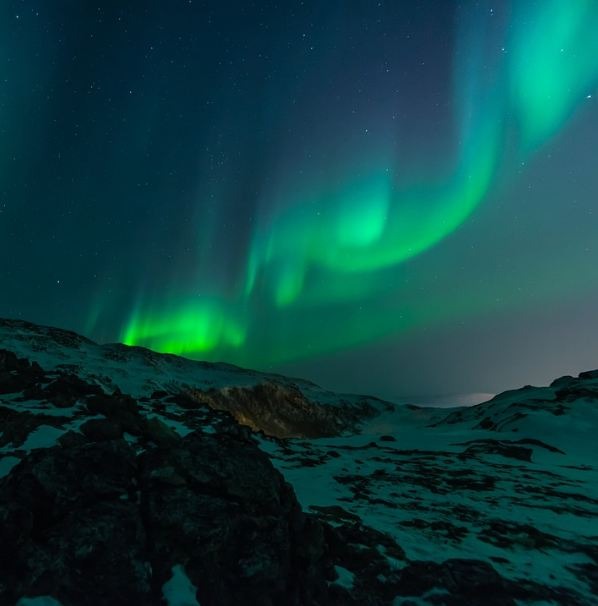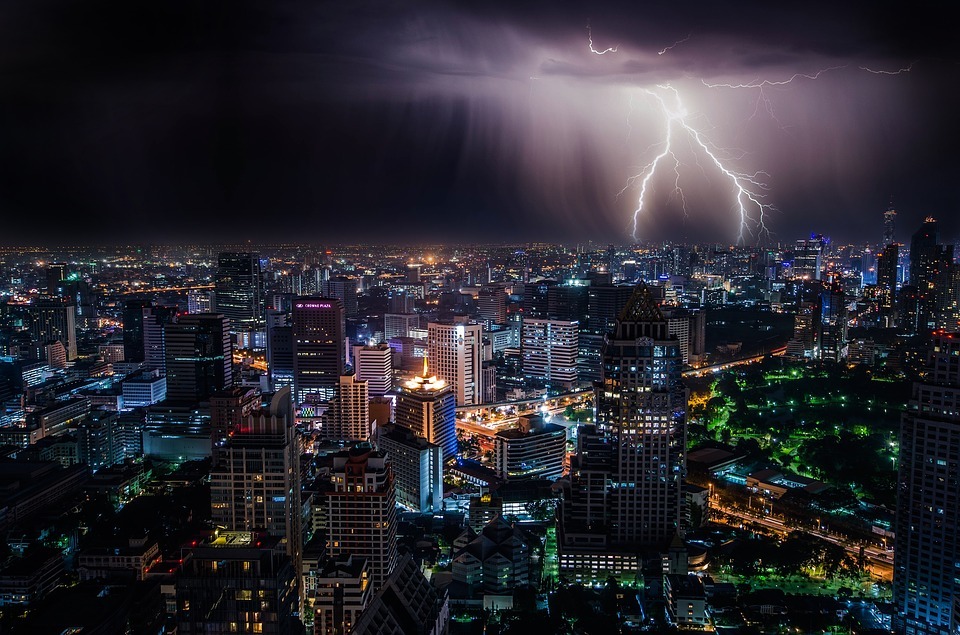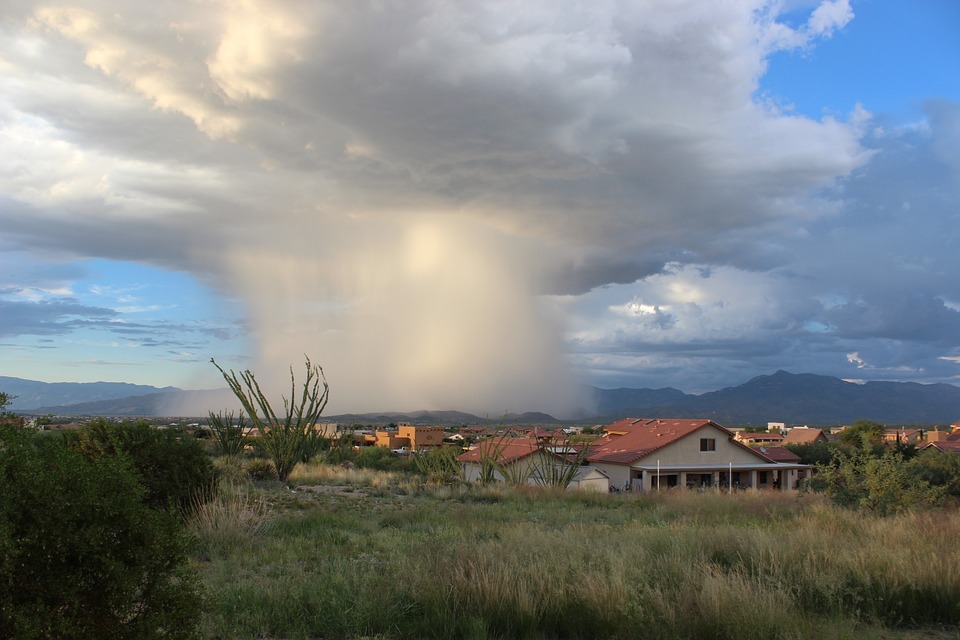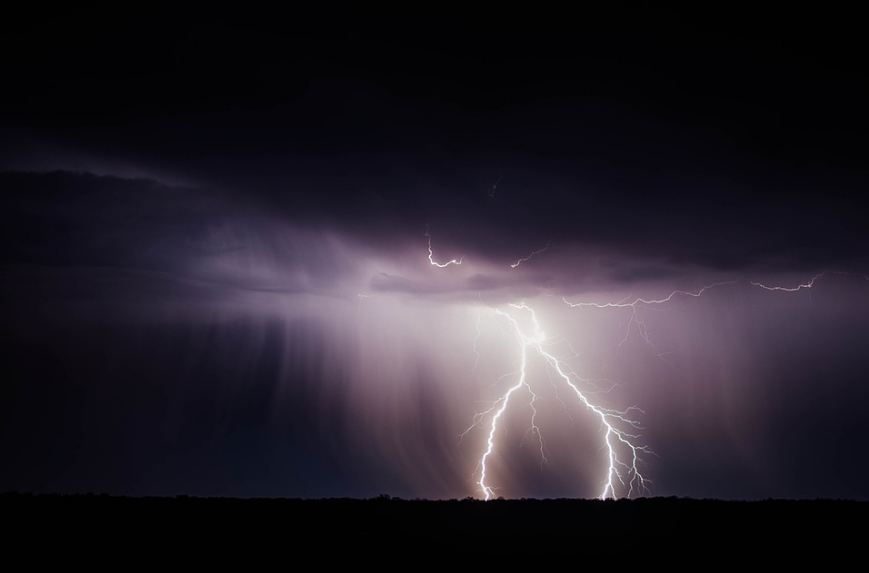Exploring the Colors of the Aurora Borealis: What Do They Mean?
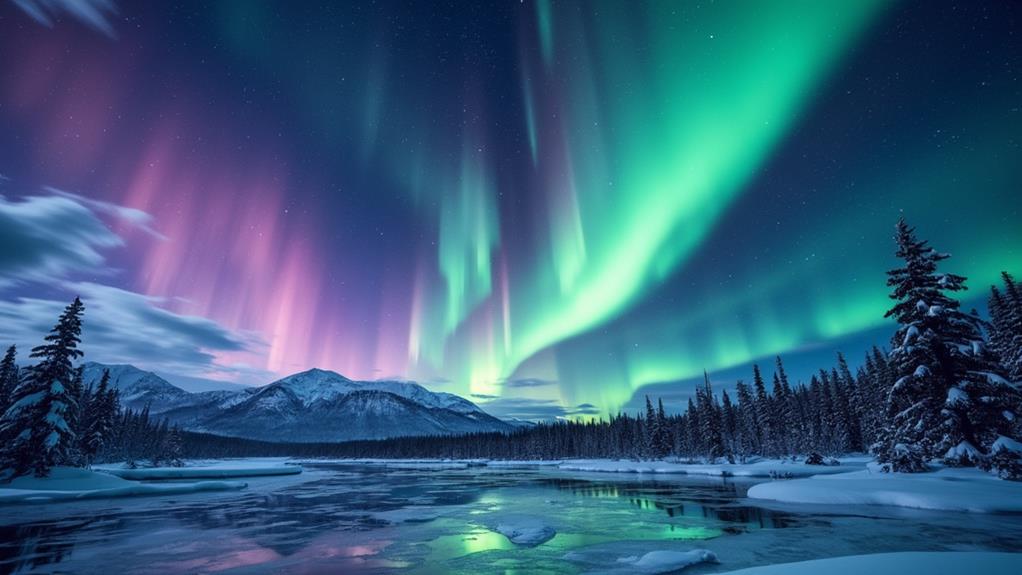
When you observe the Aurora Borealis, you're witnessing a cosmic dance between solar particles and Earth's atmosphere. The predominant green hue arises from oxygen molecules roughly 60 miles above the Earth. But what about the rare reds or the occasional blue and purple streaks? Each color indicates a specific altitude and type of particle interaction. Curious about how these colors form and what they reveal about solar activity? Let's delve into the science behind this mesmerizing phenomenon.
Causes of Aurora Colors
When you gaze at the Aurora Borealis, you're witnessing a dance of colors created by solar particles colliding with Earth's atmospheric gases. The primary color you see in the aurora borealis is green, which occurs when solar particles collide with oxygen at altitudes between 60 to 150 miles (100 to 300 km). This green hue dominates the aurora's colors and is the most commonly observed.
Red auroras are rarer and occur at higher altitudes, above 200 miles (300 km). These happen during intense solar activity when solar particles interact with oxygen, often appearing atop the green layers and adding a dramatic flair to the display.
Occasionally, you might notice blue and purple hues. These colors emerge at altitudes below 60 miles (100 km) when solar particles collide with nitrogen. Although less frequent than green, they add a unique touch to the aurora's palette.
Yellow and pink colors result from the mixing of red with green or blue light, typically observed during significant geomagnetic storms. The altitude and energy levels of the incoming particles play critical roles in determining the vivid colors of the aurora you witness.
Green Aurora Phenomenon
The green aurora phenomenon fascinates observers with its vibrant and widespread display. As the most common color in auroral events, the green hue predominates due to the interaction between solar particles and oxygen atoms in Earth's atmosphere. When charged particles from the sun collide with oxygen atoms at altitudes between 60 and 150 miles (100-300 km), these oxygen atoms become energized and, upon returning to their ground state, emit a radiant green light visible to the human eye.
Green auroras often serve as the primary color in the auroral curtain, covering vast areas of the night sky. During periods of heightened solar activity, these green auroras become even brighter and more widespread, indicating a stronger interaction between solar particles and the atmosphere. The high concentration of oxygen at these altitudes contributes significantly to the frequency of green auroras, cementing its status as the most commonly observed color in auroral displays.
Red Aurora Characteristics
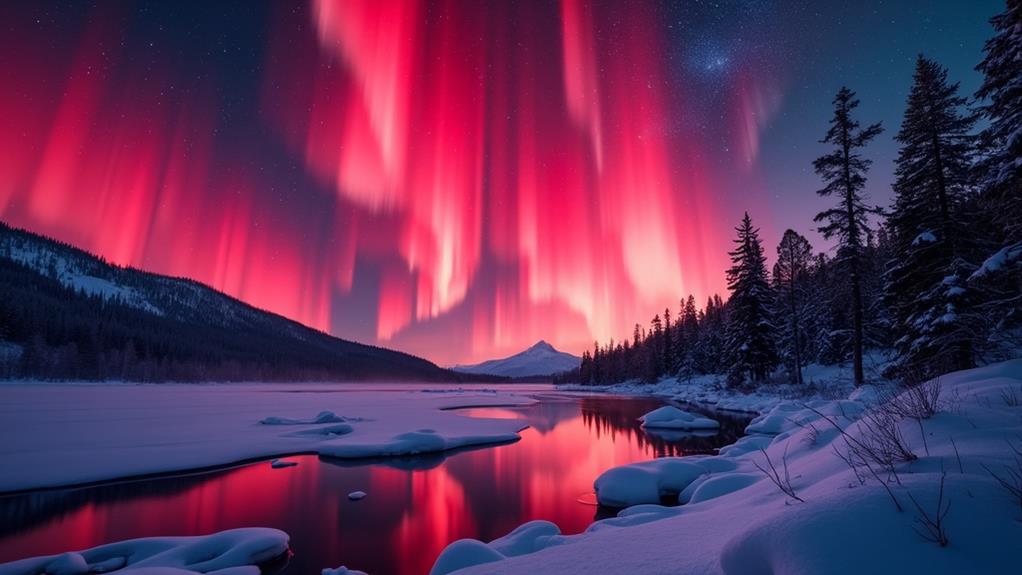
Amid the awe-inspiring palette of the aurora borealis, red auroras stand out as a rarer but highly alluring phenomenon. They typically occur during periods of intense solar activity. This enchanting red color appears when solar particles interact with oxygen molecules at altitudes above 150 miles (approximately 240 kilometers). At these high altitudes, the concentration of oxygen is lower, and excited oxygen atoms release photons, producing the mesmerizing red light.
Red auroras often grace the upper edges of auroral displays, creating a striking contrast to the more prevalent green hues below. This unique positioning makes them a particularly breathtaking sight. However, because red auroras are rarer, they are most likely to be seen during significant geomagnetic storms or solar events. These powerful geomagnetic storms increase the chances of witnessing this extraordinary spectacle, making red auroras a sought-after sight for avid aurora watchers.
Understanding the interplay between solar activity and the Earth's atmosphere helps appreciate the rarity and beauty of red auroras. Keep an eye on space weather forecasts during heightened solar activity—you might just catch a glimpse of these stunning celestial displays.
Blue and Purple Auroras
Blue and purple auroras occur when solar particles collide with nitrogen molecules at lower altitudes, typically below 60 miles. These colors are less common and generally appear during periods of high solar activity, adding unique depth to the Northern Lights. Observe the lower portions of the aurora display, as these hues result from specific energy levels and atmospheric conditions.
Nitrogen Collision Effects
Imagine gazing up at the night sky and witnessing an ethereal display of blue and purple lights dancing across the heavens. These enchanting hues result from solar particles colliding with nitrogen molecules at altitudes typically below 60 miles (approximately 100 km). When these solar particles interact with nitrogen, they excite the molecules, causing them to emit blue light. During periods of high solar activity, more complex interactions can occur, producing stunning purple hues within the auroral display.
Blue and purple auroras are less commonly observed than the more familiar green auroras. This rarity is due to the lower density of nitrogen in the atmosphere compared to oxygen and the specific energy levels required to excite nitrogen molecules. However, during high solar activity, the likelihood of witnessing these vibrant colors increases, enhancing the overall allure and complexity of the Northern Lights.
Blue and purple auroras often appear towards the lower parts of the auroral arc, adding to the intricate tapestry of colors in the auroral display. These colors serve as a reminder of the dynamic and awe-inspiring interactions occurring high above our heads.
Viewing Conditions Importance
To fully appreciate the beauty of blue and purple auroras, ideal viewing conditions are essential. These colors, less common than green, appear when solar particles collide with nitrogen at altitudes below 60 miles. Their visibility is highly dependent on solar activity, making intense geomagnetic storms the best times to witness them.
To increase your chances of seeing these elusive hues, seek out dark, clear skies away from urban light pollution. Blue and purple auroras can be subtle, so a pristine viewing environment is crucial. Patience is necessary; peak solar activity periods, which can be predicted using aurora forecasts, provide the best opportunities to observe these colors.
Yellow and Pink Auroras
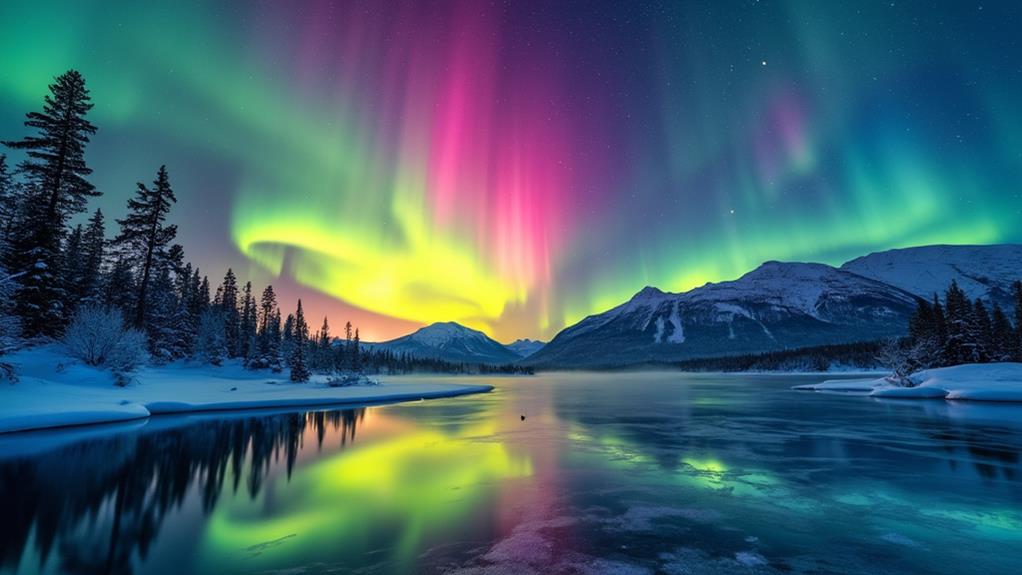
Occasionally, the night sky reveals the mesmerizing yet rare colors of yellow and pink auroras, captivating onlookers and highlighting the dynamic interplay between solar activity and Earth's atmosphere. These vibrant hues result from the blending of red and green or blue light, showcasing the intricate interactions between solar particles and atmospheric elements. Yellow and pink auroras typically appear at the fringes of the more common green auroras, adding visual complexity to the display.
The emergence of these colors is often associated with significant geomagnetic storms. While green auroras are produced primarily by oxygen at altitudes of 100-300 km, yellow and pink hues arise from the mixing of colors generated at varying heights in the atmosphere. This blending occurs when different wavelengths of light combine, creating a unique, ethereal glow.
Witnessing yellow and pink auroras highlights the dynamic nature of solar particle interactions with Earth's atmosphere. These rare colors enhance the visual appeal of auroras and underscore the powerful influence of solar activity on this natural phenomenon.
Solar Activity Impact
Solar activity significantly influences the colors and intensity of the aurora borealis. During solar maxima, when the sunspot cycle peaks, solar flares and coronal mass ejections release charged particles that interact with Earth's magnetosphere. This interaction results in more vibrant and varied auroras. Monitoring the solar cycle can help predict these stunning displays of red, blue, and purple lights.
Sunspot Cycle Influence
Amidst the ebb and flow of the sun's eleven-year solar cycle, the influence of sunspot activity on the aurora borealis becomes particularly evident. As the solar cycle progresses, periods of high sunspot numbers correlate with increased auroral activity on Earth. During these times, the sun emits more intense solar radiation, releasing charged particles that travel through space and interact with Earth's magnetic field. This interaction markedly enhances the intensity and variety of the auroras observed.
When the sun is at its peak activity, known as the solar maximum, auroras are more vivid, especially during geomagnetic storms. These storms occur when charged particles from solar emissions disturb Earth's magnetosphere, resulting in spectacular displays of colors lighting up the night sky. Historical data supports this, showing that notable auroral displays often coincide with periods of maximum solar activity.
Currently, we're heading towards the peak of Solar Cycle 25, predicted to occur in 2025. Prepare for increased occurrences of breathtaking auroras during this time. The direct relationship between the sun's behavior and auroral phenomena makes the upcoming years particularly exciting for aurora enthusiasts.
Solar Flares Impact
When discussing the captivating displays of the aurora borealis, the significant role of solar flares cannot be overlooked. Solar flares, which release vast amounts of energy from the sun, propel charged particles towards Earth's atmosphere. These particles, upon colliding with atmospheric gases, create the stunning auroras visible in the night sky.
The occurrence and intensity of auroras are closely linked to the 11-year solar cycle. During periods of high solar activity, known as solar maxima, auroras are more frequent and vibrant. This is due to the increased solar activity leading to more intense solar flares and a higher influx of charged particles.
Intense solar flares can enhance the colors of the northern lights, notably the red hues, which emerge when particles interact with oxygen at altitudes above 150 miles. This correlation between solar flares and auroras means that during periods of heightened solar activity, a greater variety of colors and more spectacular displays are expected.
Moreover, solar activity can induce geomagnetic storms, extending the visibility of auroras to lower latitudes. Consequently, regions farther from the poles can occasionally witness this mesmerizing phenomenon, allowing more people to experience the magic of the auroras.
Viewing From Space
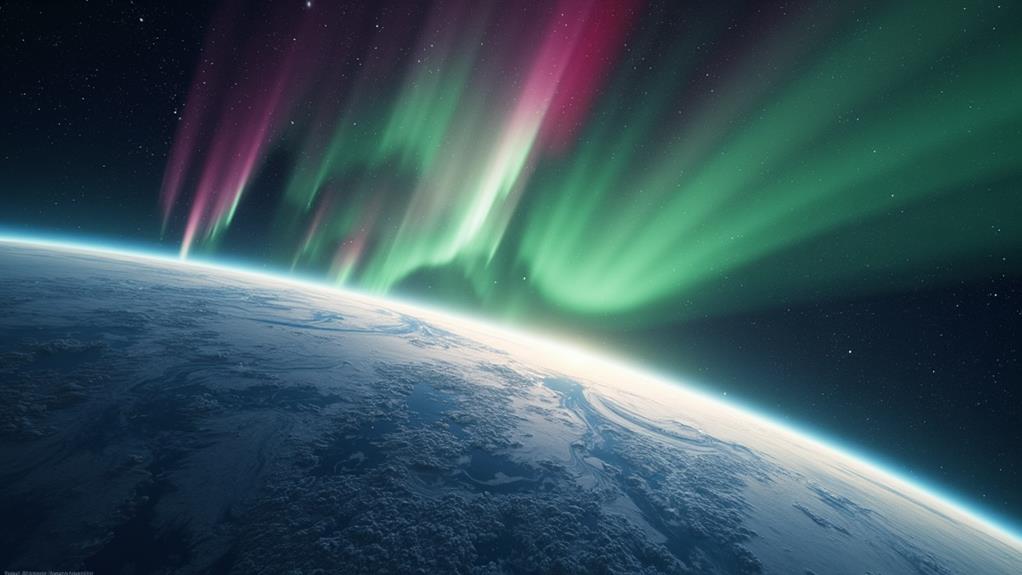
Astronauts aboard the International Space Station (ISS), orbiting approximately 400 kilometers above Earth, enjoy unparalleled views of the Aurora Borealis. From this vantage point, these northern lights appear as glowing bands or arcs shimmering against Earth's atmosphere. These stunning visuals are more than just a spectacle; they illustrate the intricate interaction between solar particles and Earth's magnetic field.
When solar wind interacts with the magnetosphere, it channels charged particles into the polar regions, creating the mesmerizing auroras. The ISS's altitude provides optimal viewing conditions, allowing astronauts to observe this space weather phenomenon firsthand. NASA has captured breathtaking images of these events, offering insights into the underlying dynamics.
Viewing the auroras from space not only offers a unique perspective but also enhances scientific understanding. Observations assist researchers in studying atmospheric processes and the impacts of space weather on Earth. By analyzing these interactions, scientists can better predict and mitigate the effects of solar activity on our planet. So, the next time you see images of auroras from space, remember the intricate and beautiful science behind these natural wonders.
Auroras on Other Planets
Auroras aren't exclusive to Earth; other planets in our solar system also host these captivating light displays. NASA has captured stunning images of auroras on Saturn and Jupiter, illustrating the universality of this phenomenon. Jupiter's auroras are particularly intense due to its strong magnetic field and abundant atmospheric gases. These factors combine to produce bright emissions in ultraviolet and infrared wavelengths, creating a spectacular display.
Saturn's auroras, often displaying beautiful green and purple hues, are primarily caused by interactions between solar wind and its magnetic field, much like Earth's auroras. When solar particles collide with Saturn's atmosphere, they create these mesmerizing colors. However, the exploration of auroras extends beyond the gas giants.
Mars also exhibits auroras, which differ from those on Earth. Mars' thin atmosphere and localized magnetic fields result in auroras that are more region-specific. These auroras are influenced by solar wind interactions, creating unique light shows that add to the planet's mystique.
Although less understood due to their distance, Uranus and Neptune experience auroral activity as well. Their auroras remain a subject of ongoing study, promising more revelations about how solar particles and magnetic storms create these cosmic spectacles.

